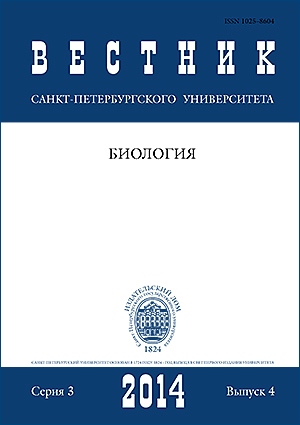The discovery of the Baltic ringed seal (Pusa hispida botnica) breeding lair in Kurgalskii Reserve
Abstract
This short note provides information on discovering of breeding lair of the Baltic ringed seal (Pusa hispida botnica Gmelin, 1788) in Kurgalskii Reserve of regional importance, Leningrad Region. The discovering is the first evidence of subspecies breeding in the reserve and within the southern part of the Gulf of Finland as a whole. Data of location, total description and basic dimensional characteristics of the breeding lair are provided. The probability of females’ breeding close to continental coast and to villages may have positive consequences for population in warm winters when the space of fast ice is restricted, but the probability of the pup becoming prey to terrestrial predators increases. The importance of the discovering is discussed in relation to low abundance of the population and current conditions of Kurgalskii Reserve. In case of confirmation of ringed seal regular breeding in the reserve it is necessary to revise and expand certain points of the Provision of Kurgalskii Reserve. It is also necessary to appoint an inspector for permanent control of marine area of Kurgalskii Reserve. Refs 18. Figs 1.
Keywords:
Baltic ringed seal, breeding lair, Gulf of Finland, Kurgalskii Reserve, human disturbance, commercial fishery
Downloads
Downloads
Published
How to Cite
Issue
Section
License
Articles of Biological Communications are open access distributed under the terms of the License Agreement with Saint Petersburg State University, which permits to the authors unrestricted distribution and self-archiving free of charge.





